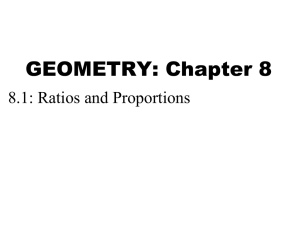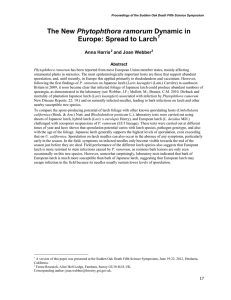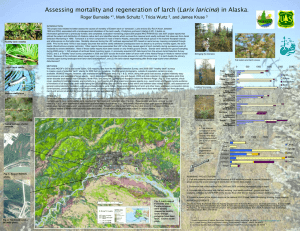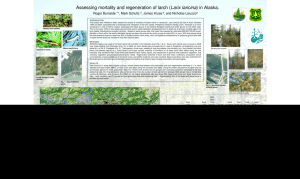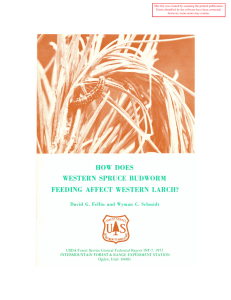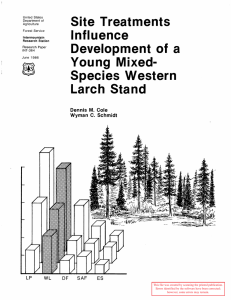Canopy transpiration of mountain mixed forest
advertisement
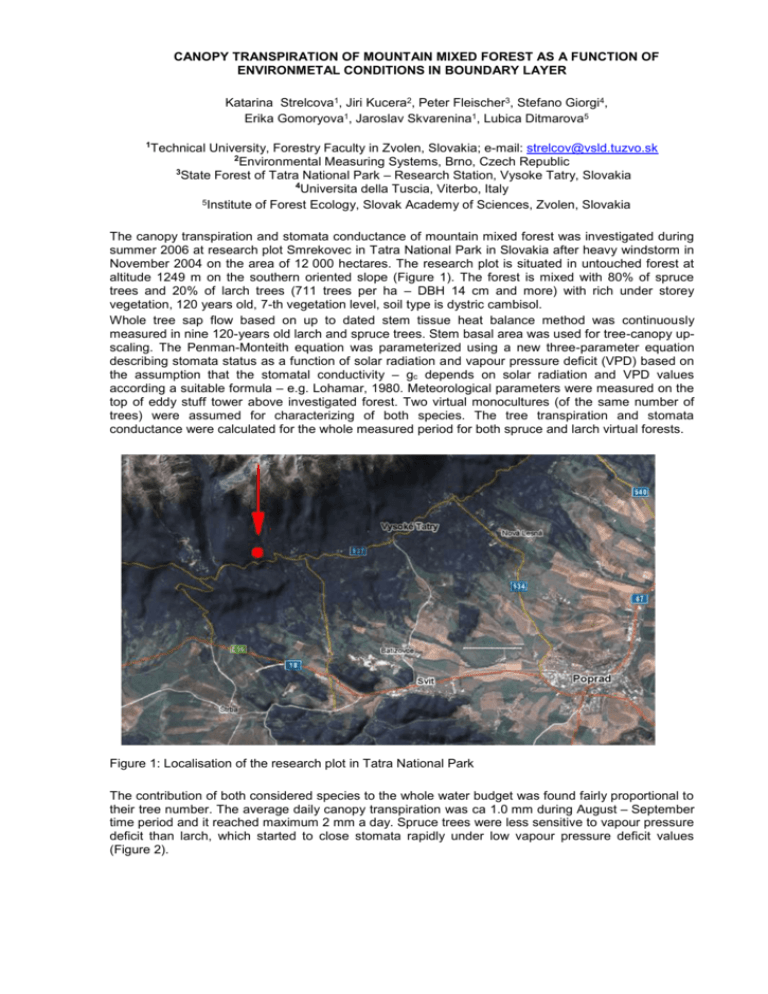
CANOPY TRANSPIRATION OF MOUNTAIN MIXED FOREST AS A FUNCTION OF ENVIRONMETAL CONDITIONS IN BOUNDARY LAYER Katarina Strelcova1, Jiri Kucera2, Peter Fleischer3, Stefano Giorgi4, Erika Gomoryova1, Jaroslav Skvarenina1, Lubica Ditmarova5 1 Technical University, Forestry Faculty in Zvolen, Slovakia; e-mail: strelcov@vsld.tuzvo.sk 2 Environmental Measuring Systems, Brno, Czech Republic 3 State Forest of Tatra National Park – Research Station, Vysoke Tatry, Slovakia 4 Universita della Tuscia, Viterbo, Italy 5Institute of Forest Ecology, Slovak Academy of Sciences, Zvolen, Slovakia The canopy transpiration and stomata conductance of mountain mixed forest was investigated during summer 2006 at research plot Smrekovec in Tatra National Park in Slovakia after heavy windstorm in November 2004 on the area of 12 000 hectares. The research plot is situated in untouched forest at altitude 1249 m on the southern oriented slope (Figure 1). The forest is mixed with 80% of spruce trees and 20% of larch trees (711 trees per ha – DBH 14 cm and more) with rich under storey vegetation, 120 years old, 7-th vegetation level, soil type is dystric cambisol. Whole tree sap flow based on up to dated stem tissue heat balance method was continuously measured in nine 120-years old larch and spruce trees. Stem basal area was used for tree-canopy upscaling. The Penman-Monteith equation was parameterized using a new three-parameter equation describing stomata status as a function of solar radiation and vapour pressure deficit (VPD) based on the assumption that the stomatal conductivity – gc depends on solar radiation and VPD values according a suitable formula – e.g. Lohamar, 1980. Meteorological parameters were measured on the top of eddy stuff tower above investigated forest. Two virtual monocultures (of the same number of trees) were assumed for characterizing of both species. The tree transpiration and stomata conductance were calculated for the whole measured period for both spruce and larch virtual forests. Figure 1: Localisation of the research plot in Tatra National Park The contribution of both considered species to the whole water budget was found fairly proportional to their tree number. The average daily canopy transpiration was ca 1.0 mm during August – September time period and it reached maximum 2 mm a day. Spruce trees were less sensitive to vapour pressure deficit than larch, which started to close stomata rapidly under low vapour pressure deficit values (Figure 2). Key words sap flow, larch, spruce, biological and meteorological factors, Tatra National Park Figure 2: Tree transpiration measured and calculated in the rather wet subperiod and the stomatal conductance. Virtual spruce and larch forest Keywords: Sap flow, Larch, Spruce, Biological and meteorological factors, Tatra National Park


